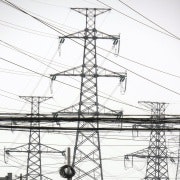Electricity demand on the skids?
Introduction from the editor: Australian electricity demand has been flat-lining across Australia since 2007-08 yet we have great difficulty determining the precise causes. Unfortunately the electricity authorities – the Australian Energy Market Operator, Western Power and NT's Power and Water – do not publish electricity demand data to a level of detail and in a manner readily interrogated by the general public that would enable us to isolate potential causes relatively easily.
The unexpected and large drop-off in electricity demand growth has major implications for electricity prices, energy infrastructure investment, government policy and greenhouse gas emissions. Given its large importance, Climate Spectator has run several articles analysing potential causes and implications. Analysis by Ric Brazzale and Hugh Saddler have pointed towards the potential contribution of greater energy efficiency of buildings and appliances as well as increased penetration of solar PV. In addition, Roger Dargaville has pointed out that mild weather has unlikely to have been a major factor in reduced electricity demand.
More recently Climate Spectator published a piece by Keith Orchison, which, drawing on data from the Energy Supply Association of Australia (ESAA), suggested that challenging economic conditions and declines in business activity were the predominant driver of the drop-off in demand growth. Orchison felt that residential demand was not ‘flat-lining', and queried the importance of greater energy efficiency and solar PV.
Below Hugh Saddler provides an alternative take on the ESAA data.
Demand for electricity – has the paradigm truly changed?
The recent publication of the ESAA's statistical annual, Energy Gas Australia, provides another year of data on Australian electricity consumption. Because electricity industry businesses use a consistent definition of a residential customer, the ESAA data can be used with reasonable confidence to separate residential from business consumption of electricity over time.
Unfortunately, ESAA data is not perfect, and discontinuities mean that consistent time series have to start from 2003-04. This is sufficient, however, to show the key changes in trend.
A previous examination of residential electricity consumption, extending to 2009-10, showed that growth in consumption has slowed significantly since 2006. Consumption per capita has actually been falling. With the possible exception of WA, this was the case for every individual state.
Addition of data for 2010-11, shown in the first graph for the NEM as a whole, shows that the trend is continuing. Moreover, non-residential consumption, accounting for about 70 per cent of the total, shows a similar trend.

In Queensland, 2010-11 was an annus horribilis, with business activity and normal life massively disrupted by floods. This shows up as a sharp drop in electricity consumption for the year, shown in the next graph.

However, removing Queensland from the data does not greatly change the trend for the wider NEM, as the next graph shows. Remember that these numbers are total electricity consumption, not consumption per capita or per $ of GDP/GSP, so, since both the economy and the population have continued to grow, the economy is clearly becoming less electricity intensive, while residential consumption is declining per person and per household.

Unsurprisingly, WA is different, as the final graph shows. It is not hard to see that WA is where business is booming. However, for residential consumption, the difference may have more to do with the previous Labor government's insistence on blocking increases in residential electricity prices than on real differences in consumer behaviour.
Should we expect residential electricity consumption to start growing again in Queensland? Premier Newman may be constructing an interesting reverse experiment, to test the effectiveness of price as a policy for restraining demand growth and encouraging more efficient use of energy.

















